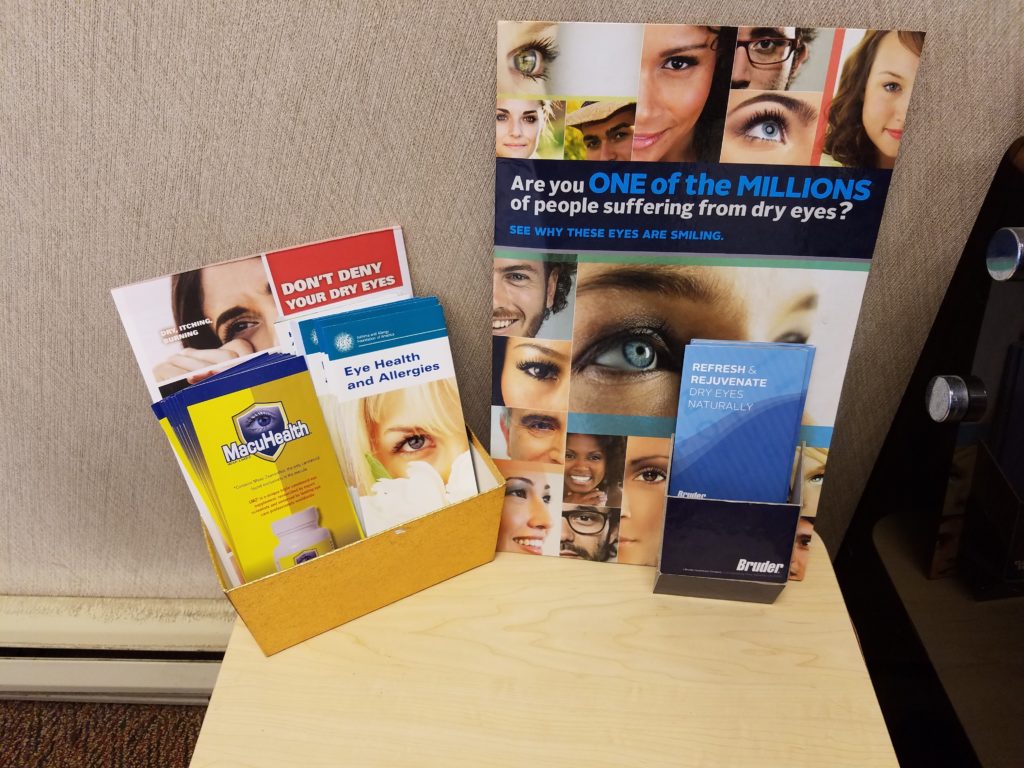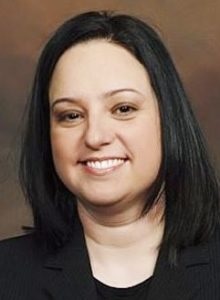By Maria Sampalis, OD

May 10, 2017
There are sources of revenue in your practice, right under your nose, that you may be overlooking. OD practice owners often let easily earned money slip through their hands, and along with it, the care and products your patients most need. Here are six areas of practice management that owners often overlook, and how to optimize these opportunities to better care for patients and drive revenues.
Under-Diagnosed & Under-Treated Dry Eye
Dry eye is still an often-overlooked opportunity for patient care and practice growth. If 600 of your patients have dry eye, but have not been diagnosed and treated for it, not only are these patients not getting the care they need, but you could be leaving a minimum of $36,000 on the table each year (600 x $60, the rate at which the 99212 code reimburses), as 99212 is the minimum code you can use for dry eye visits.
That additional $36,000 doesn’t count the revenues you could generate selling products like Bruder pads and collagen plugs drops in your office, which could bring in another $10,000, or more.
Don’t forget that patients seek care at other offices if you fail to ask the right questions and identify and address their challenges. That results in poor patient care, lost revenue and an inability to retain patients long-term.

Materials in Dr. Sampalis’s office to educate patients about dry eye, and promote the related services which the practice provides.
Under-Reimbursed Contact Lens Services
Your experience and time is important. Yearly contact lens evaluations should be structured based on chair time and complexity of the contact lenses that have been prescribed, and are being fitted, by you. Set fees according to how much time is required to serve the patient.
That means, for example, that if you are prescribing and fitting multifocal contact lenses, toric lenses, or other specialty contact lenses, you should add into your fees the additional chair time required of you to serve that patient.
Not Offering “Custom CL Options”
Encourage patients to buy a year’s supply of contacts, incorporating rebates offered by contact lens manufacturers, and also provide “custom contact lens options.” Custom means customized to each wearer’s individual needs, so that you offer your monthly lens wearer the option for a second, concurrent contact lens prescription for daily disposables for vacations or weekends.
“Custom” options could also apply to the patient who only wants to wear contacts for special occasions, or special activities.
The combination of selling more annual supplies, along with smaller supplies of custom contact lens options, will enable you to generate more income with extra sales of boxes. Patients will pay for the convenience of lenses they may not want to wear all the time, which they can throw away after one use.
Not Reviewing Managed Care Plans Accepted, Fees & Reimbursement
Managed care plans can bring in volume, and are not accepted by all offices. If your office is not booked two weeks out, consider accepting these plans to get patients in the door–if you aren’t already.
Evaluate your fees based on your Explanation of Benefits (EOB), or insurance allowable. Take a look at your EOBs and contracts with insurance co-pays. If the insurance companies are paying a certain fee for a CPT code, you should have that information. For instance, some of your patients’ insurance plans pay doctors for refraction, with the 92015 code, so don’t miss out on that.
Check insurance co-pays and deductibles ahead of time to know what to properly charge the patient at the time of the visit. Always have the patient pay at the time that services are delivered, as it’s always harder to have a bill paid if sent after the fact. You can also give patients the option of giving you a credit card number to keep on file. Keep in mind, however, that if you do that, you are responsible for securing that information, just as you are responsible for securing the patient’s other personal information.
Not Giving Your Community What it Wants
Value means quality products, like advanced spectacle and contact lenses, but it also means convenience and efficiency.
Know the demographics of the community your practice serves, and target your services and products to exactly what that community wants. For example, ask yourself if your patients could use an ECP with office hours that accommodate their work schedule, meaning an office that stays open at least one night a week to 7 p.m. or 8 p.m., and/or is open on Saturdays. You also should ask how important it is to your local community that you are efficient enough to take walk-in patients, and provide for the patient who broke her glasses, and needs a new prescription and a new pair of glasses the same, or next, day.
Unnecessary Referrals & Not Co-Managing
Referring patients for services that you can complete in your own office is throwing money away, and the patient is less likely to come back. For instance, an OD who practices full-scope medical eyecare can diagnose and manage dry AMD herself with Ocuvite, retinal photos and a proper management plan, including prescribing a pair of blue light-protecting glasses.
You also might be missing earning opportunities in not co-managing patients having procedures like LASIK and cataract surgery. As LASIK co-management is $1,000, that is a missed opportunity.
Cataract surgery co-management takes less time than a regular exam, and can reap the benefits of 20 percent of total allowed fee of surgery.
 Maria Sampalis OD, practices at Sampalis Eye Care in Warwick RI. She is also the founder of Corporate Optometry on Facebook. Dr. Sampalis is also founder of the new job site corporateoptometrycareers.com and www.corporateoptometry.com. She is available for practice management consulting. To contact: msampalis@hotmail.com
Maria Sampalis OD, practices at Sampalis Eye Care in Warwick RI. She is also the founder of Corporate Optometry on Facebook. Dr. Sampalis is also founder of the new job site corporateoptometrycareers.com and www.corporateoptometry.com. She is available for practice management consulting. To contact: msampalis@hotmail.com



























